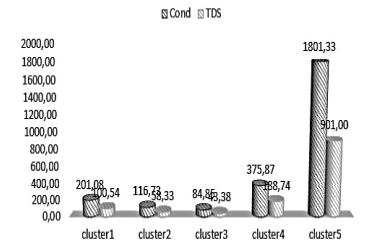Statistical Modelling by Topological Maps of Kohonen for Classification of the Physicochemical Quality of Surface Waters of the Inaouen Watershed Under Matlab
Keywords:
Classification, Self-Organizing maps, SOM, Physical-Chemical parameters, ClusterAbstract
Self-organizing maps (SOMs) and other artificial intelligence approaches developed by Kohonen can be used to model and solve environmental challenges. To emphasize the classification of Physico-chemical parameters of the Inaouen watershed, we presented a classification strategy based on a self-organizing topological map (SOM) artificial neural network in this study. The use of a self-organizing map to classify samples resulted in the following five categories: Low quantities of Sodium Na (mg/l), Potassium k(mg/l), Magnesium Mg(mg/l), Calcium Ca(mg/l), Sulfates SO4(mg/l), and Total Dissolved Solids TDS (mg/l) distinguish Classes 2 and 3. Bicarbonate HCO3 (mg/l), Total Dissolved Solids TDS (mg/l), Total Alkalinity CaCO3(mg/l), Mg(mg/l), Calcium Ca (mg/l), and electrical conductivity Cond (ms/cm) are slightly greater in Classes 1 and 4. Except for Dissolved Oxygen D.O. (mg/l) and Nitrate NO3(mg/l), Class 5 has exceptionally high values for all metrics. The results suggest that Kohonen's self-organizing topological maps (SOM) classification is an outstanding and fundamental tool for understanding and displaying the spatial distribution of water physicochemical quality.

Published
How to Cite
Issue
Section
Copyright (c) 2022 Journal of the Nigerian Society of Physical Sciences

This work is licensed under a Creative Commons Attribution 4.0 International License.
How to Cite
Most read articles by the same author(s)
- Rachid El chaal, Hamid Dalhi, Otmane Darbal, Omar Boughaleb, Analytical resolution of nonlinear fractional equations using the GERDFM method: Application to nonlinear Schrödinger and truncated Boussinesq-Burgers equations , Journal of the Nigerian Society of Physical Sciences: Volume 7, Issue 4, November 2025







